Understanding Stimulant Addiction
Learn about stimulant addiction & abuse
Stimulants are a classification of substances that produce instant feelings of well-being, confidence, and euphoria. When individuals abuse stimulants to the point that their use induces clinically significant impairment or distress, they are likely suffering from stimulant use disorder.
Stimulants can include a number of different types of drugs, including cocaine, methamphetamine, amphetamine, and additional amphetamine-type substances, such as prescription medications like Adderall and Ritalin. Stimulants work by enhancing the effects of certain neurotransmitters in the brain, particularly by increasing the amount of dopamine that is released. The chemical dopamine is responsible for the regulation of one’s feelings of pleasure, satisfaction, and motivation, amongst many others. The brain’s reward system is activated by the presence of stimulant substances, leaving users overwhelmed by a sense of grandiosity, inflated confidence, euphoria, and pleasure. Furthermore, stimulants work to enhance an individual’s mental acuity and performance, allowing him or her to successfully complete more tasks in a shorter period of time. This can enhance a person’s self-esteem, further exacerbating the cravings that he or she has for using the substance.
Once an addiction to stimulants has developed, it can be exceedingly difficult for individuals to overcome this devastating habit without assistance. Fortunately, there are many treatment options available that can help people combat their stimulant addiction, overcome their compulsion to use them, and successfully achieve and sustain sobriety.
Statistics
Stimulant abuse statistics
There are a number of statistics regarding the prevalence of stimulant abuse throughout the United States. Cocaine is said to be the most commonly abused of all illicit substances and, according to the office of the National Drug Control Policy, approximately 3.6 million individuals use cocaine on a regular basis. Methamphetamine abuse is said to impact nearly 1.2 million people and accounts for an estimated 90% of all cases in which individuals are seeking treatment for substance abuse concerns. Amphetamine abuse has been consistently on the rise, with studies concluding that approximately 13 million people use amphetamine substances without the supervision of medical professionals.
Causes & Risks
Causes and risk factors for stimulant abuse
Professionals in the field of mental health and addiction, in conjunction with researchers, agree that there can be a number of causes and risk factors that make individuals more susceptible to developing a problem with stimulant abuse. These causes and risk factors are discussed briefly in the following:
Genetic: Addiction has long been known to run in families, demonstrating the strong genetic link its onset. Individuals who have first-degree, biological family members who struggle with chemical dependency concerns are at a much higher risk for eventually struggling with such concerns themselves than are those individuals who do not share similar genetic backgrounds.
Environmental: There can be a number of environmental influences that impact a person’s susceptibility to developing an addiction to substances, including stimulants. Individuals who grow up in environments where drug and/or alcohol use is rampant often find that they, themselves, become entrapped in the cycle of addiction as well. In regards to stimulants in particular, individuals who are exposed to chronically stressful work environments or who find that they have many obligations to meet frequently turn to the use of stimulants in order to give them the boost of energy and productivity that they need in order to successfully complete their tasks.
Risk Factors:
- Family history of chemical dependency
- Personal or family history of mental health conditions
- Personal history of abusing other substances
- Being chronically subjected to high levels of stress
- Exposure to violence and/or crime
- Being exposed to stimulant substances (e.g. cocaine) while in utero
- Ease of accessibility to obtaining the substance
Signs & Symptoms
Signs and symptoms of stimulant abuse
When an individual has developed a problem with abusing stimulant substances, there can be a number of behavioral, physical, cognitive, and psychosocial symptoms that present themselves that can make such a problem known to those around the individual. The specific symptoms themselves will vary from person to person depending upon a number of factors, but may include the following:
Behavioral symptoms:
Teeth grinding
Acting out aggressively
Rapid speech / constantly feeling the need to speak
Increased energy / hyperactive behaviors
Participating in high-risk behaviors
Engaging in violent activities
Lying
Stealing
Seeming as though one is constantly in motion
Physical symptoms:
Changes in eating patterns (typically eating less)
Extreme weight loss
Anemia
Hair loss
Breathing difficulties
Impaired sexual performance
Extreme fatigue / disturbed sleeping patterns
Physical and mental exhaustion
Hypertension
Skin problems
Chronic itching
Profuse sweating
Chest pain
Cognitive symptoms:
Paranoia
Psychosis
Hallucinations
Delusions
Confusion
Enhanced sensory awareness
Impaired judgment
Poor impulse-control
Flight of ideas
Enhanced mental acuity
Psychosocial symptoms:
Alternating between having an exaggerated self-esteem and a low self-esteem
Heightened sense of well-being
Feelings of fearlessness
Hypervigilance
Acute anxiety
Feelings of panic
Extreme feelings of unwarranted fear
Depression
Suicidal ideation
Effects
Effects of stimulant abuse
The long-term effects of stimulant abuse can be vast and cause immense detriment on all aspects of an individual’s life. The actual effects that will be imposed upon users of this substance will vary greatly depending on the specific type of stimulant that is being abused, the frequency of the abuse, and the length of time during which the abuse has occurred. Examples of possible effects that may arise can include the following:
Social isolation
Aggressive behaviors
Sexual dysfunction
Dramatic behavioral changes
Cardiovascular system damage
Respiratory / pulmonary damage
Gastrointestinal complaints
Kidney failure
Muscle tenderness
Development of cognitive deficits (including difficulties with concentration, sustaining attention, abstract thinking, and problem-solving)
Problems with short-term memory
Co-occurring Disorders
Stimulant abuse & co-occurring disorders
There are a number of mental health conditions that can co-occur alongside stimulant use disorder. Some of the most commonly cited of such conditions include:
- Bipolar disorder
- Posttraumatic stress disorder (PTSD)
- Attention-deficit/hyperactivity disorder (ADHD)
- Antisocial personality disorder
- Schizophrenia
- Depressive disorders
- Other substance use disorders
- Eating disorders






